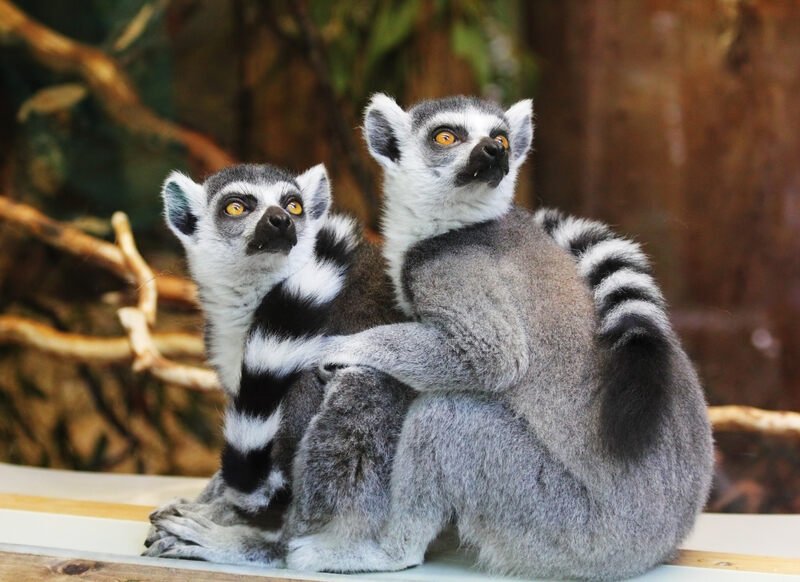Best time to go to Madagascar: when to go on vacation

Are you wondering when is the best time to go to Madagascar? Discover in this article our advices to go on a relaxing vacation.
The best period to visit Madagascar is, in principle, between April and October: you are in fact in the dry season, characterized by pleasant temperatures and a particularly low humidity. The dry season is the first of the two main seasons that characterize the climate of this island.
Instead, the second season of Madagascar is the wet season: it is comprised in the months of early December to late March. During this period the humidity is higher, but in general the climate and temperatures remain more than suitable for visiting Madagascar.
In addition, before choosing the destination for your vacation in Madagascar, you should also keep in mind the geographical differences: the west coast can boast a much drier and sunnier climate throughout the year; on the east coast, however, the climate is more humid. Knowing the best time to visit Madagascar can help you plan your vacation. While to avoid any possible inconveniences, it is advisable to take out travel insurance before you leave.
REQUIREMENTS FOR ACCESS TO MADAGASCAR
Visa for Madagascar: how to get it and how much does it cost ?
Tourists are always welcome in Madagascar and obtaining a visa is also quite simple. Indeed, there will be no need to follow a complicated bureaucratic procedure before leaving, as the tourist visa for Madagascar can be applied for upon arrival on the island.
The cost of obtaining a visa varies according to fluctuations in the local currency, so it is a good idea to check with official sources to find out the exact amount. For a visa up to 30 days, you can pay from €20 to about €40 per person, but there is also the possibility to apply for a 60-day visa for a cost of about €70 or a 90-day visa for about €100.
Those who want to avoid the queue at the airport to obtain a visa for Madagascar, can also apply for one at the Malagasy embassy in Rome, in order to start immediately the vacation without hindrance.

THE NECESSARY DOCUMENTS:
- To obtain the visa, you must have a passport with a residual validity of at least 6 months and a free page. It is also necessary to present the return ticket, in order to prove that at the end of the vacation you will leave the country regularly.
- Since you need a passport to land in Madagascar, before departure, it is good to make sure that the document is valid and in good condition. If not, it will be necessary to renew it in order to avoid problems at the border.
- To obtain a visa, in addition to the passport, you will also have to hand in a form provided by the airline company, where you can write down contact details and information about previous trips made.
FAUNA AND FLORA
The subhumid forests of Madagascar are an ecoregion of the Afrotropical ecozone, defined by WWF (ecoregion code: AT0118), which occupies most of the central plateau of Madagascar. Together with the Eastern Madagascar Tropical Forests and Ericoid Maquis ecoregions, it forms the region known as the Forests and Maquis of Madagascar, included in the Global 200 list.
TERRITORY
C’est une écorégion de forêt tropicale d’une superficie totale d’environ 199 500 km² (environ la moitié du Paraguay), qui couvre la majeure partie du plateau central, au-dessus de 800 m à l’est et 600 m à l’ouest. Il est bordé au nord et à l’ouest par la forêt sèche de feuillus de l’ouest de Madagascar, à l’est par les forêts tropicales de l’est de Madagascar, au sud-ouest par les forêts succulentes de Madagascar et au sud par la forêt épineuse. Il va jusqu’à l’océan Indien avec deux bandes étroites au nord-est et au nord-ouest ; dans cette dernière zone, il borde également l’une des enclaves de mangrove de Madagascar. En six endroits, au-dessus de 1800-2000 m d’altitude, il cède la place au maquis éricoïde de Madagascar. La montagne d’Ambre, à l’extrême nord de l’île, abrite une enclave forestière subhumide, entourée à basse altitude par une forêt sèche de feuillus. L’écorégion comprend également quelques enclaves situées sur les massifs de l’Anavelona et de l’Isalo au sud-ouest de l’île, entourées à des latitudes plus basses de fourrés succulents. Comme le plateau reçoit les alizés humides, cette région est plus humide que les régions environnantes au nord, au sud et à l’ouest.
Flora
The native flora of the ecoregion has been altered by human intervention: large areas have been cleared to make way for agriculture and ranching, and many exotic species have been introduced. However, areas of dense evergreen forest and areas of open montane forest still remain. Large areas are covered with grasslands, but it is not clear whether their origin is due to human intervention or not. The ecoregion is home to various species belonging to the temperate Antarctic flora of the southern hemisphere, including various species of podocarpaceous conifers (Podocarpus spp. and Afrocarpus spp.) and Takhtajania perrieri, the only winteraceous representative in Africa. Among the endemic plants, the traveler’s tree (Ravenala madagascariensis) and the Bismarckia nobilis palm stand out.

Wildlife
This ecoregion was home to a characteristic megafauna in ancient times. Because of Madagascar’s isolation, rare species of terrestrial mammals, especially lemurs, have evolved to adapt to certain niches. There were giant lemurs (Megaladapis edwardsi), now extinct, as large as an adult orangutan. Various species of elephantine birds, Aepyornis, the giant flightless ratites, also disappeared after the arrival of humans on these islands; among them was Aepyornis maximus, the largest bird that ever existed. Among the endemic species of this region that still survive are various species of shrews, tenrecs and rodents. Birds include the critically endangered Alaotra hawk (Tachybaptus rufolavatus), the Madagascar duck (Aythya innotata), and two species of passerines: the yellow-browed garrulous (Crossleyia xanthophrys) and the brown-tailed forapaglia (Bradypterus brunneus).
There are at least 25 endemic species of reptiles and 20 of amphibians, including many chameleons, such as Calumma tsaratananense, Petter’s chameleon (Furcifer petteri), and the dwarf chameleons Brookesia ambreensis, Brookesia antakarana, Brookesia lineata, and Palleon lolontany in the north and northwest, and Calumma fallax, Furcifer campani, and Furcifer minor in the central and southern parts of the region; such as Calumma tsaratananense, Petter’s chameleon (Furcifer petteri), and the dwarf chameleons Brookesia ambreensis, Brookesia antakarana, Brookesia lineata, and Palleon lolontany in the north and northwest, and Calumma fallax, Furcifer campani, and Furcifer minor in the central and southern region; two species of skinks in the genus Amphiglossus (A. crenni and A. meva) and two species of Trachylepis (T. madagascariensis and T. . nancycoutuae); the oplurid Oplurus grandidieri; two geckos, Lygodactylus blanci and Klemmer’s day gecko (Phelsuma klemmeri); the lizard Zonosaurus ornatus; the snakes Pseudoxyrhopus ankafinaensis, Liopholidophis grandidieri and Liopholidophis sexlineatus; and the amphibians Rhombophryne testudo, Scaphiophryne gottlebei, Mantella crocea, Mantella cowanii, Blommersia domerguei, Boophis laurenti and Boophis microtympanum
Conservation
The ecoregion is considered critically endangered: its forests are in a worse state of conservation than those of neighboring ecoregions, probably due to its greater population density even in historical times and its proximity to the capital, Antananarivo; in addition, the widespread practice of slash-and-burn agriculture has destroyed much of the forest
BEACHES
This land of a thousand colors has more than 5,000 kilometers of coastline characterized by long white sandy beaches with clear bottoms and rich in fish, not to mention the wonders of the coral reef! Madagascar is surrounded by small islands more or less known by international tourism, sheltering as many splendid beaches, but which are the most beautiful?

Anakao
The beach of Anakao is located in the south of the island, in a less known part of the tourist circuits. The wonder of its white dunes and its sea with shades of green and blue will seduce you immediately and you will not want to leave.
Nosy Tanikely
Nosy Tanikely is a small volcanic island with a beautiful beach ideal for snorkeling and diving enthusiasts thanks to its coral reef a few meters from the beach. The island is also part of a marine park where you can admire many animal species never seen before.
Nosy-Boraha
Nosy Boraha is a beach located on the island of the same name: white granite sand, coral and palm trees down to the sea will give you the impression of living in a movie. Here, between June and October, you can admire the whales weaning their young in the bays of the island.
Nosy Iranja
Also in the archipelago of Nosy Be is Nosy Iranja. This unique beach in the world consists of two islands connected at low tide by a strip of sand. You will be subjugated by this marvelous place and will literally stroll in the Indian Ocean along its banks of a blinding white.
Madirokély
Madirokely is certainly one of the most famous beaches of the Nosy Be archipelago. This, in addition to being one of the most beautiful and lively beaches, is the ideal place to organize visits to neighboring islands and practice all kinds of outdoor sports, from snorkeling to diving.
Sainte-Marie
Located in the extreme south of Madagascar, the islet Sainte Marie is a must-see within the Special Reserve of Cape Sainte Marie, a nature reserve that occupies most of the promontory, created in 1962. Here, from July to September, you may have the chance to see whales passing through these waters before resuming their journey to the South Seas.
Nosy Nato
Ile aux Nattes is a small island south of Sainte Marie Island, from which it is separated by a small channel. It is a classic tropical island, with curved white beaches and overhanging palm trees, a turquoise sea with waves breaking on the coral reef, a light breeze and a green interior.
Les trois baies
La zone des Trois Baies est située sur la côte nord-est de la province d’Antsiranana de l’île de Madagascar. Les Trois Baies – Baie des Dunes, Baie des Pigeons, Baie de Sakalava – sont bordées par une seule longue plage de sable blanc. Destination idéale pour les surfeurs et pour ceux qui aiment les plages peu fréquentées.
Andilana
On the island of Nosy Be, Andilana forma occupies the northern tip and has white sand and turquoise waters. This beach attracts thousands of tourists seduced by this postcard decor.


